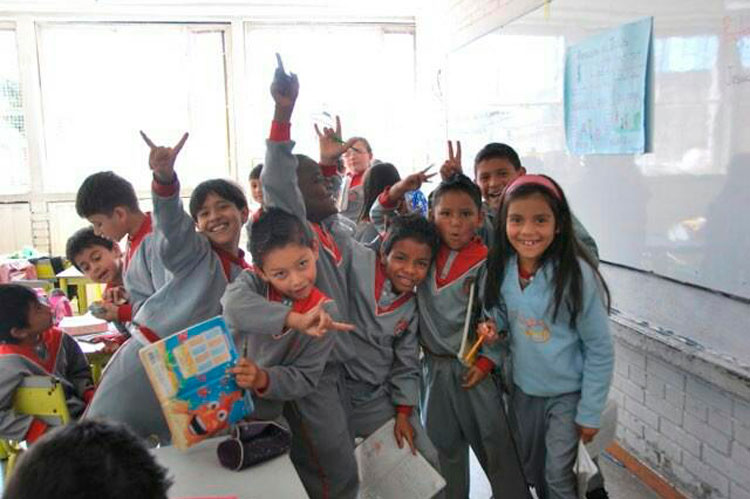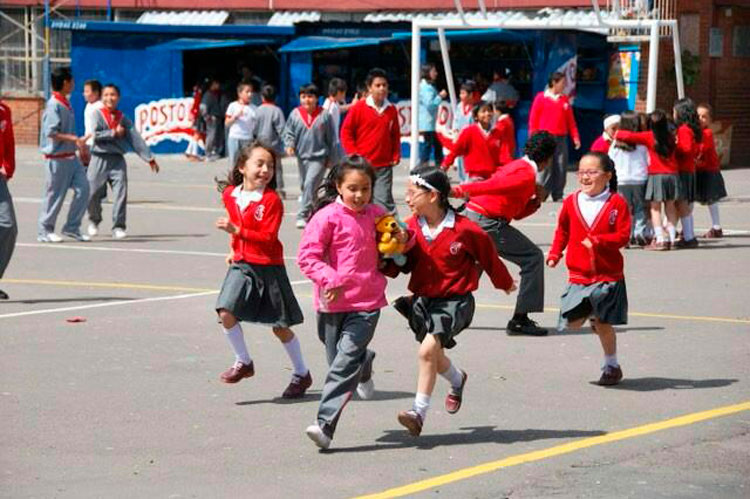While American schools continue to maintain a strong presence in the top-ranked education systems in the world, there are still some lessons that the U.S. can learn from its counterparts abroad.
At first, one might think of countries such as Finland, a country repeatedly in the news about putting the U.S. educational system to shame. But the lessons American schools can learn go beyond the Scandinavian country. Developing countries, including Colombia, where I was born, can serve as examples of aspects that the U.S. could incorporate into its educational system.
Learning to be resourceful
While resources are crucial, they don’t create good teachers or good students; they simply facilitate the education process. So, many educators around the world have worked, -without the fanciest resources,- on new models to improve the conditions of rural schooling in developing countries.
The Escuela Nueva model, considered one of the long-standing, bottom-up innovations in the developing world, was a project originated in Colombia during the ‘70s that aimed to transform the learning paradigm, in which the teacher is the only one conveying information in the classroom.
The model, which was later implemented in 19 other countries, is focused around the needs of isolated rural communities that couldn’t adapt to the traditional education system. In this model, children of different ages and grade levels are put into small groups to work at their own pace avoiding students to repeat grades and to take exams when they are not ready. It was created to improve school dropout, grade repetition and ineffective teaching methods.
In many places, innovation doesn’t come from technology or financially supported projects. This model responds to the rural communities it serves in a low-cost way. No advanced technology, no modern infrastructure, no iMacs in every classroom and no luxurious student housing. They live with a little, and do a lot. Why wait for economic resources or technologically advanced materials to help us create real change? There is something to learn from the value placed on education in these countries: An impressive capability of doing more with less.
Learning to appreciate learning

Children in class in Bogotá, Colombia | Juan Pablo Fierro
When opportunities are scarce or seen as unattainable, the tremendous amount of effort and resilience to receive education usually leads to a better appreciation for it.
One gets to truly value education when it has not been given, but gained. While this philosophy is not new, it is certainly something students from developing countries get to experience very often, – and U.S. students sometimes forget.
In most developing countries, the difficulty of getting to school and the cost of schooling is a major challenge for students. This is not to say that American students don’t face challenges or value their education, but students in the developing world face significantly more obstacles than most students in the U.S.
While in many remote areas of the world few children are able to graduate from secondary school and many don’t even finish primary school, in the United States, most students have freedom of choice about what university to enroll and whether they want to go to college.
Francisco Reyes, national project manager for PISA, PIRLS and TIMSS educational and literacy surveys in Colombia, explained how low-income students in Colombia highly appreciate the opportunity to go to school.
“It is a common case to see children who need to wake up before 5 a.m. to go to school. Most of them lack of books and internet accessibility at home, so they public libraries are usually full of enthusiastic and curious children, even on weekends,” he said.
These circumstances make students and their families more resilient, which also constructs a mentality where education is widely perceived as a gift and not just to enable students to get money-as sometimes is seen in the U.S.
Learning to be more globally aware
We all have seen these TV interviews where reporter is out on the streets, asking college students questions about geography, history and current events. While it’s unreasonable to label an entire country based on some people’s embarrassing answers, it’s not a secret that Americans have struggled in these areas.
Geography is not emphasized in American schools, not as the STEM fields are. From a personal standpoint, I studied 14 years in Colombia and I remember learning all about European and American history throughout elementary and middle school. This doesn’t mean that developing countries like Colombia have exemplar geographic literacy, but global awareness is fostered in our classrooms and we are encouraged to think globally by learning English from a very young age and traveling abroad during high school.
It is a problem when Americans students are not encouraged to be curious about foreign studies because they are growing up in an increasingly globalized world that is also highly impacted by their country’s decisions.
While there are unlimited perks of studying in the U.S., looking at the education system in other countries with fewer opportunities enables us not only to value education more, but to reevaluate what Americans should put more focus on.

